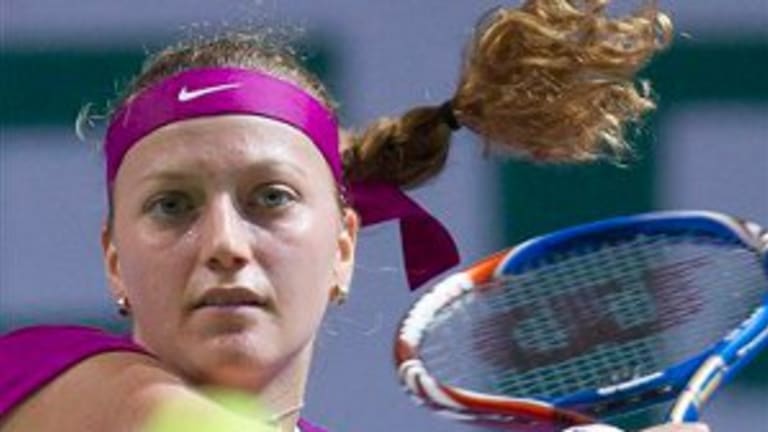This final felt like the beginning of something, like we were finally seeing the new era in women’s tennis we thought was coming until we thought it would never come. Veterans kept winning the big ones. Women’s tennis was graying, we were told. It was, it is and it’s been fun to watch. But that wasn’t the story today. Today two of the top young players faced off, the two oddsmakers picked at the start, and it ended as oddsmakers thought it would.
Petra Kvitova beat Victoria Azarenka. It took nearly two and a half hours and all of three sets, but she won it 7-5, 4-6, 6-3. It’s fitting—we’re talking about the WTA Championships, and it’s increasingly clear Kvitova is the WTA player of the year.
With this win, Kvitova ends the year at a career-high No. 2 ranking. In 2011 she’s undefeated indoors (19-0), earned more prize money than anyone (over $5 million) and is tied with top-ranked Caroline Wozniacki for most singles titles. What makes Kvitova the year’s best is which titles she won: Three are among the nine biggest—this year-end championship, a premier mandatory (Madrid) and that all-important Grand Slam (Wimbledon). (She beat Azarenka on her way to all three titles.) And she may not be done—next weekend the Czech lefty leads her country in the Fed Cup final against tennis powerhouse Russia.
But back to today in Istanbul, where everything went right for Kvitova, as it often does, until it went completely wrong, as it often can. She went up 5-0 in the first set, hitting winners with her forehand and with dropshots; forcing herself to approach, though her net play is still a work in progress; serving well, aided by that lefty serve; and returning even better. Her first return was an inside-out forehand winner that looked so easy… and so painful for Azarenka. After five games, Azarenka looked near tears.
But things changed after Azarenka hit three winners in a row to hold and get on the board. The crowd roared, and Azarenka, with help from Kvitova’s many misses, roared back, all the way to 5-all. By this point, Kvitova had 11 winners but 11 also errors. She managed to steady herself, barely winning a set that initially looked like a bagel.
In the second set, Kvitova forgot the variety—perhaps tentative or tired—and hit fewer winners, while Azarenka made fewer errors and made the most of her break points. Azarenka was growing in confidence, even finding the energy to stick her tongue out a few times, and was calmer than usual, while Kvitova’s body language wasn’t the best for a while.
In the last set both played well, and, finally, mostly at the same time. Kvitova was simply the better player, using more power and variety, better with her groundstrokes, serves and touch. The woman has weapons—I remember asking her coach about them, and he laughed before answering; how can you not when your student has access to all that?—and in this set she managed to use them consistently. But throughout the match, whether she was hitting winners (she hit 42 in all) or errors (she hit 43 in all), there was never any doubt who would determine the result.
Their head-to-head is now 4-2 Kvitova, with the Czech winning the last four.
Azarenka has had a great year, though. She finishes at a career-high ranking of No. 3, reached her first Grand Slam semifinal at Wimbledon, won three titles and, earlier this year, went on a 12-match winning streak. In the offseason she’ll probably want to work on bringing back some of her more aggressive tennis—and work on her health (has any top player retired more in 2011?). But the fact is, Azarenka has been talked up for a few years and is increasingly showing us why.
Can Kvitova and Azarenka keep all this up? And if so, what will that mean for Caroline Wozniacki, who’s been the top young gun for two years but now barely leads them in the rankings? What will it mean for the old guard, the Williams sisters, Kim Clijsters and others? And what of Maria Sharapova? Most begin their offseasons but will be back soon to work on their games and coax the answers their way. Meanwhile, we’re left with questions to ponder and, without much live tennis, finally some time to ponder them.
—Bobby Chintapalli
